The Aegean Coast: Battlefields, Markets, and Roman Ruins
- Aaron Schorr
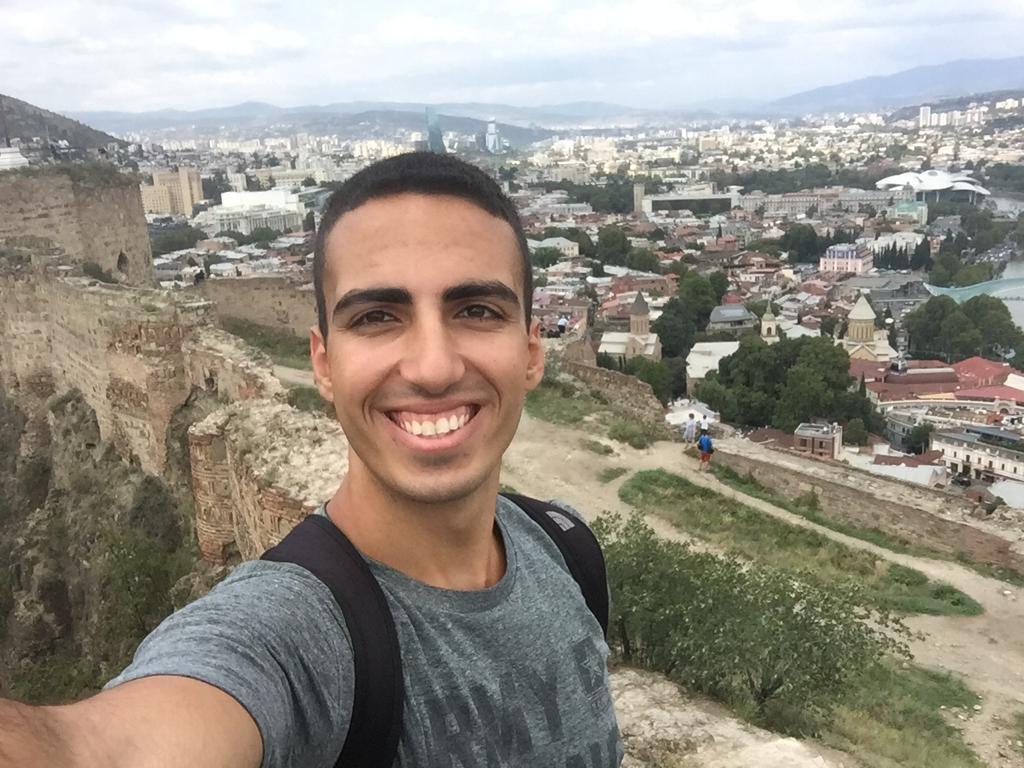
- Aug 9, 2021
- 14 min read
Updated: Aug 13, 2021
After a repeat of the previous morning’s breakfast, we got on the highway for the long trip out of Istanbul. It was an hour of pressing stop-and-go traffic, but we were finally free of the city in the Turkish European countryside, which was not as densely populated as I had expected. We left the motorway amid a flashing yellow light which probably meant an inflated toll payment in our future and headed south. The first town off the motorway was Tekirdağ, where we spotted an Airbus A310 in the parking lot of a restaurant advertising köfte. Climbing the air stairs, we discovered the aircraft contained its own, smaller restaurant, but it was not open. According to a local we met later, this was a “Turkish concept” and could be found in other restaurants throughout the country.
The road became a narrow country lane, and the scenery became very rustic and beautiful. We passed countless corn, sunflower, and watermelon fields, the bustle of Istanbul suddenly very far away. The car needed gas, and we found a small gas station in which to fill up. The place looked kind of shabby, the card terminal wasn’t working, however, and when I lifted the diesel handle I noticed it was all rusted up. A man walked out of the shop and said something to me in Turkish. “Motorin (diesel)?” I asked him. “Motorin yok,” he replied, and made a hand motion that left no doubt that nothing was going to come out of this pump. He then went to his car and pulled a jug of a yellowish-greenish liquid out of his trunk. “Motorin.” I thanked him and continued on, and luckily there was a functioning station further down the road.
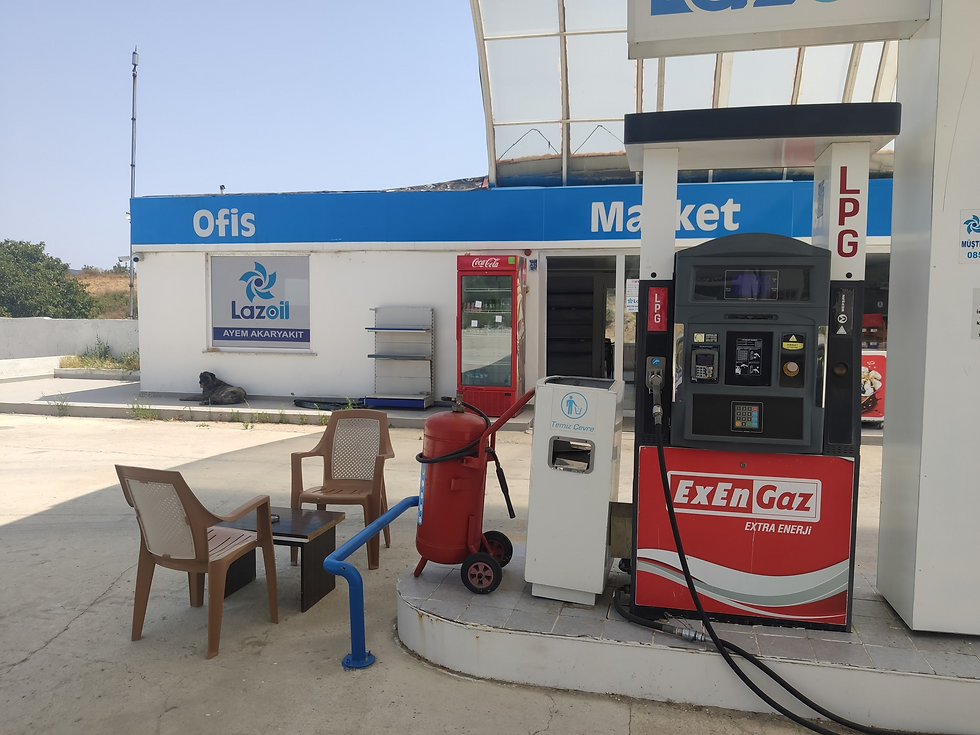
Into the Trenches of Gallipoli
We were on the Gallipoli Peninsula, which forms the outer barrier of the Dardanelles, the narrow strait connecting the Sea of Marmara to the Aegean Sea, and by extension - the Black Sea to the Mediterranean. In 1915, the Allied Powers attempted to seize control of the Dardanelles to open a sea route to Russia and keep the Ottoman Empire from joining the Central Powers. After failing to capture the strait with naval power alone, an invasion force landed on the peninsula and fought the Ottoman army for 8 months in brutal trench warfare until the Allies retreated in early 1916.


We were driving to the battlefield, and we passed a massive suspension bridge under construction by a South Korean company. Bits and pieces of concrete motorway and cable stays were lying in neat rows by the road like a massive Lego set, ready to bridge this body of water for the first time. At this point, the strait was only just over 4 km wide, but the massive structure seemed very out of place in rural hill country and in very stark contrast with the lack of development we had seen just a few kilometers earlier.
We arrived at the “Epic Promotion Center”, a museum dedicated to the history of the battlefield commissioned by Erdogan and opened in 2012. The museum was very informative, and had a great collection of mementos and diary entries to browse. At 3:15, we were ushered into an auditorium to begin an audiovisual tour of the battlefield - a highly patriotic and graphically impressive film about the naval campaign. We thought there was going to be one film to watch, but we were then taken to the next room, where there was another film, this one designed like a ship and focusing on the Turkish minelayer Nusret which dealt the Allied fleet heavy damage. This process repeated itself 5 more times, until we finally gave up on trying to understand the Turkish language audio. What I did manage to make out, several times, was yiğit mehmetçik, the former word meaning “brave” and the latter being a Turkish equivalent of a G.I.
There were no towns in our immediate vicinity, but there was a small ferry terminal which had a restaurant attached to it (Greece controls nearly all the islands in the Aegean, but a handful of them belong to Turkey). It was a really weird place, essentially a bunch of tables under a tarp with a 8-foot tall handwritten menu, but it got the job done. We also learned that the Turkish şakşuka bears no resemblance to Israeli shakshuka, and is an eggplant appetizer instead.
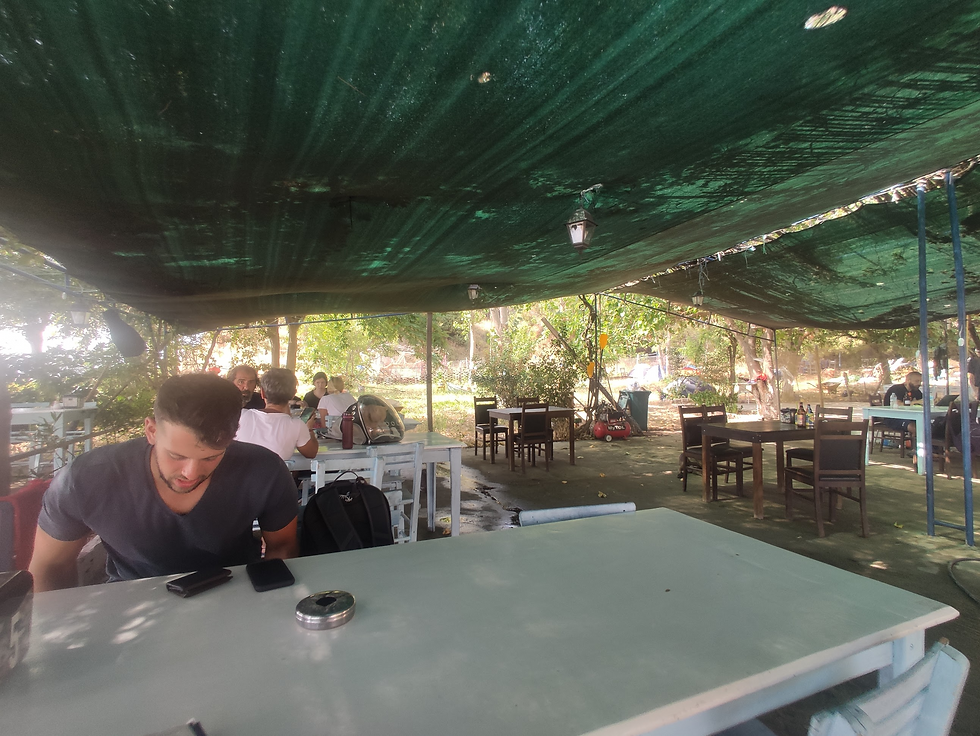
We drove along the coast until we reached ANZAC Cove, the spot where Australian and New Zealand forces landed in April 1915. There were some information placards and a stone sign, but otherwise not much to see. A man was taking photos of a woman and a kid on a stand-up paddleboard in the water, he then told us that he was in the British military and was looking up some information about his regiment which had fought in Gallipoli.

We left the beach behind and started climbing into the hills above. The first stop was Lone Pine Cemetery, a stern, white memorial to the many Australian and Kiwi soldiers whose grave locations were unknown (we even found a Jewish tombstone). The white marble cross in the center bore some resemblance to the Australian military cemetery in Jerusalem, but perhaps that was my imagination. Below the cemetery were Turkish and Australian trenches, tunnels, and ambulance roads, incredibly well preserved 105 years after the fighting ended. The trenches were only a few dozen meters apart, and the weeds and bushes gave no indication of the horrible events that had transpired in front of them. I tried to imagine what these young invaders had felt, plucked from boyhood in Australia or New Zealand and shipped halfway across the war to fight a doomed battle they likely knew nothing about, locked in vicious combat for months in shallow trenches for nebulous strategic purposes.
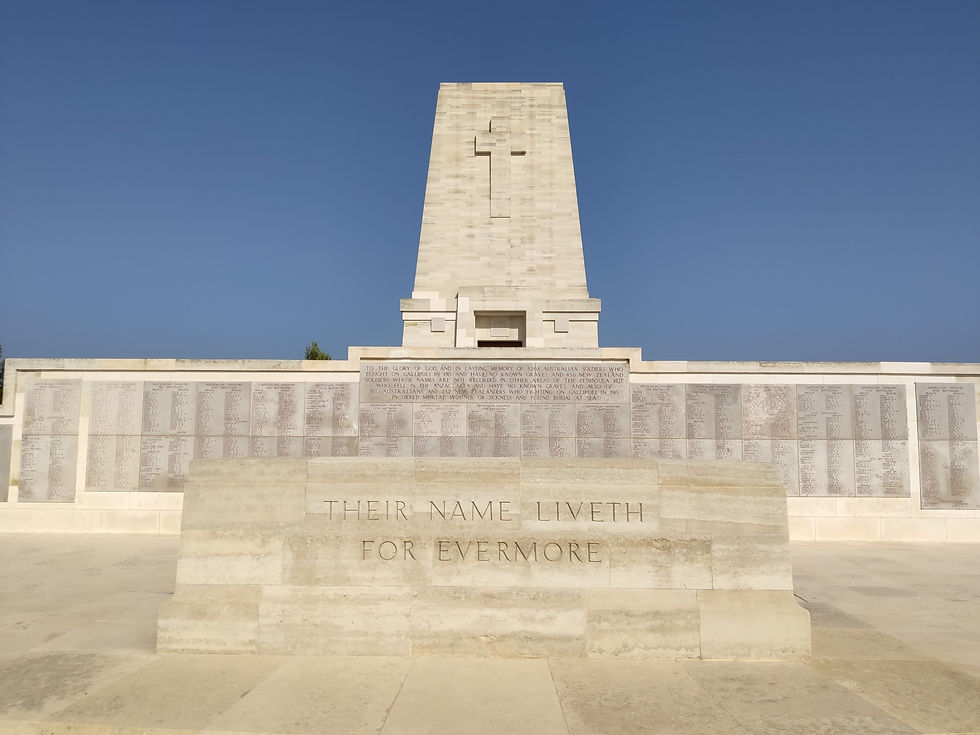

Further up the hill was the main Ottoman cemetery, memorializing the 57th Infantry Regiment which lost roughly half its men during the Gallipoli campaign. This was a very different cemetery, all flags and bombastic patriotism reinforced by the Ataturk quotes inscribed in the marble and the 40-foot high bronze statue of a mehmetçik. The Turkish soldiers at Gallipoli were noted for their bravery, which in reality translated to rows upon rows of gravestones, most with very young ages next to their names.


The final stop was unsurprisingly a statue the size of an apartment block of Ataturk, who had made a name for himself as a skilled military commander at Gallipoli. The surrounding area had reconstructed trenches running through it, and a huge Turkish flag to take pictures with. The visibility would have been amazing, if not for a thick haze which I suspected was caused by the forest fires raging to the south.
The Wrong Kind of Turkish Oven
We drove down the mountain and further down the coast to the town of Eceabat, where there was a ferry to take us to the Asian bank of the Dardanelles. The ferry was causing a massive traffic jam, but we eventually managed to drive onto one and got nice views of the strait before disembarking in Çanakkale. This was a bustling resort town, and we had great köfte sandwiches for dinner (Turkish cuisine really loves the combination of bread and meat).
Çanakkale is far off the backpacker trail in Turkey, which meant no hostels to stay in. We had booked an Airbnb in a residential neighborhood, and were checked in by a woman who spoke no English. Her colleague led us up to our room, handed us a roll of toilet paper, and said goodbye. We looked around for the air conditioning, but couldn’t spot any. The sole small window had been closed all day, and there was not so much as a fan to cope with the stifling heat. With the sun down, the temperature outside was still pushing 30˚, and the room was even hotter than that. The property manager on Airbnb rightfully pointed out that the listing did not mention air conditioning (I frankly thought it went without saying) and said that we were in “the coldest side of the building,” which made me shudder at the thought of the southern side.
The woman came back and tried having a conversation with us through Google Translate. I don’t know if it was the app misunderstanding her, but we got the sentence “try it naked,” which really shows you how dire the situation was. Sleep was clearly going to be impossible here, so we left and checked into a hotel at the edge of town. The manager greeted us with “Shabbat Shalom” (it was Thursday) and gave us a key to a fourth-floor room. The place was clearly a converted attic and sported one of the strangest designs I’ve seen, but at least the air conditioning worked. We were lucky there, because it was stifling after baking in the sun all day, the walls positively warm to the touch and the towels feeling like they had been deliberately warmed. The shower felt like a wave pool the way the pressure and temperature were fluctuating, but at this point I could care less. I parked myself in front of the air conditioning and planned our next steps.

A Smoky Morning
After waking up the next morning, I walked out to our room’s terrace to find a pale orange sun in a gray sky. To leave no doubt that this was a product of the forest fires, fine bits of ash were falling from the sky and had coated our car overnight. After a very Turkish breakfast and a series of hand gestures to get a semi truck to stop blocking our car, we gladly left Çanakkale behind, which had not left us with many fond memories.
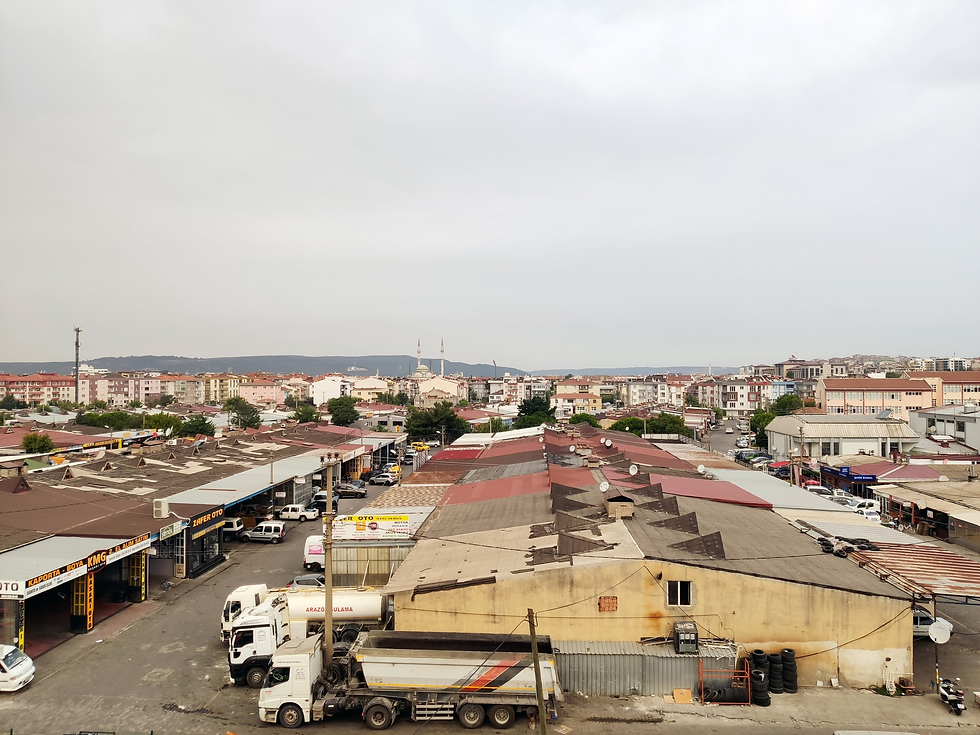
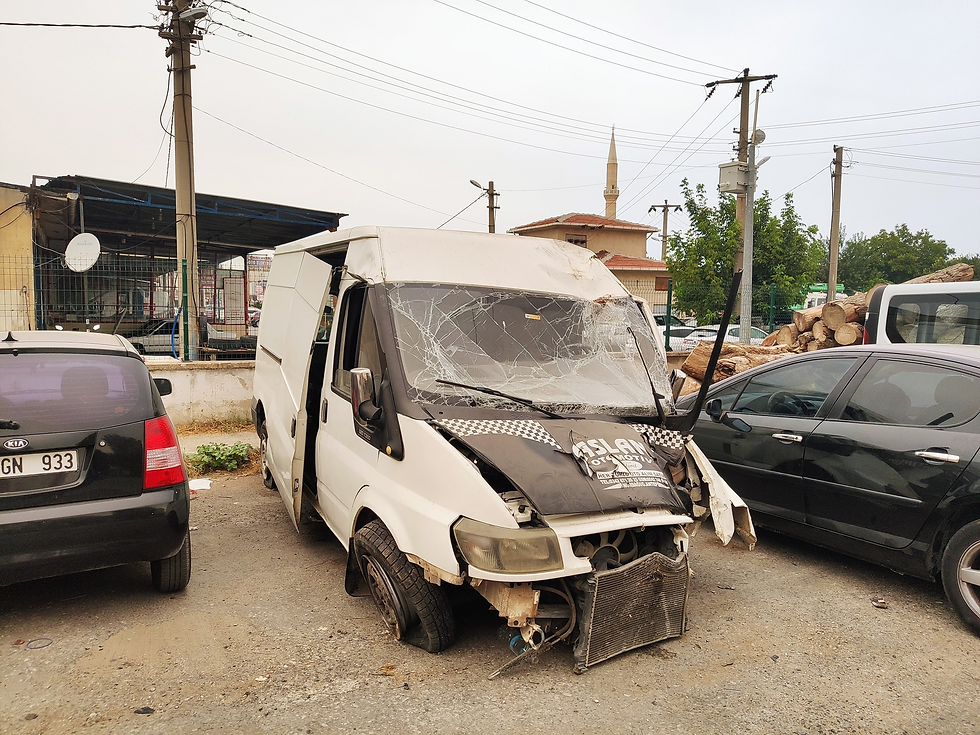
Past the town of Ayvacık, the highway suddenly became a one-lane mountain road full of trucks. I was stuck behind two semitrailers and was climbing uphill in first gear since there was literally zero visibility, but that didn’t stop several vehicles behind me from overtaking all of us with no regard for their own safety. We emerged in the city of Akçay and slowly crawled through a series of towns with endless traffic lights. Google Maps took us on some side roads, and it suddenly felt like I had been teleported to Vietnam. The tea plantations were replaced by other green fields, but the broken roads, triumphal arches, and roadside stands looked the same.
We pulled off the highway to visit the ancient city of Troy. Everyone knows the story of the Trojan Wars immortalized in the Iliad, but lots more happened here. The site has stratified remains of nine separate eras in the city's habitation, stretching from an Anatolian village built in 3,000 BCE to the Roman city destroyed in an earthquake 3,500 years later. The site has been extensively excavated (and is still being excavated), and the different strata are often visible on top of each other. The orange-gray sky made for a very dramatic backdrop to examine the ruins, which varied from nondescript piles of stones to impressive and mostly-reconstructed public buildings.

We rejoined the highway and drove through hills covered in olive trees. We stopped for lunch at a restaurant advertising olive oil, but they said their best dish was Ayvalık Tost, a highly Americanized grilled cheese sandwich named after a nearby coastal city. I also ordered a glass of mulberry juice, which was way too sweet and tasted like the raspberry syrup drink served at every Israeli summer camp. They did have a stand selling olives and olive oil, however, and most of the products I tasted were very good.
Izmir: The Ultimate Driving Challenge Part II
We eventually reached a motorway and sped south towards Izmir (like with Istanbul, I will use the Western spelling because İzmir feels pretentious), the sky changing colors the whole time. The city is a sprawling mass centered on a natural gulf which made it a prime location for a port already in ancient times, possibly over 8,000 years ago. During the Greek and Roman eras, it was known as Smyrna, a name which was is still used in several European languages, and served as a major commercial center. The city has some pretty dramatic scenery, with steep mountains rising from the bay blanketed in very dense neighborhoods.
Our navigation app took us through one of those neighborhoods called Basmane, and I’m happy I had the extreme driving experience in Istanbul because this was arguably worse. The streets were steep to the point of nearly stalling out after every absurdly sharp turn with zero visibility, and full of kids who didn’t seem to mind our presence. Several streets I was supposed to follow were impassable alleyways, forcing me to make some very dodge three-point turns on the hillside to find a new way. We eventually emerged in a market and had to weave between baklava and meat stalls, bakeries, and shoppers until we found a gravel lot to leave the car until we left the city.
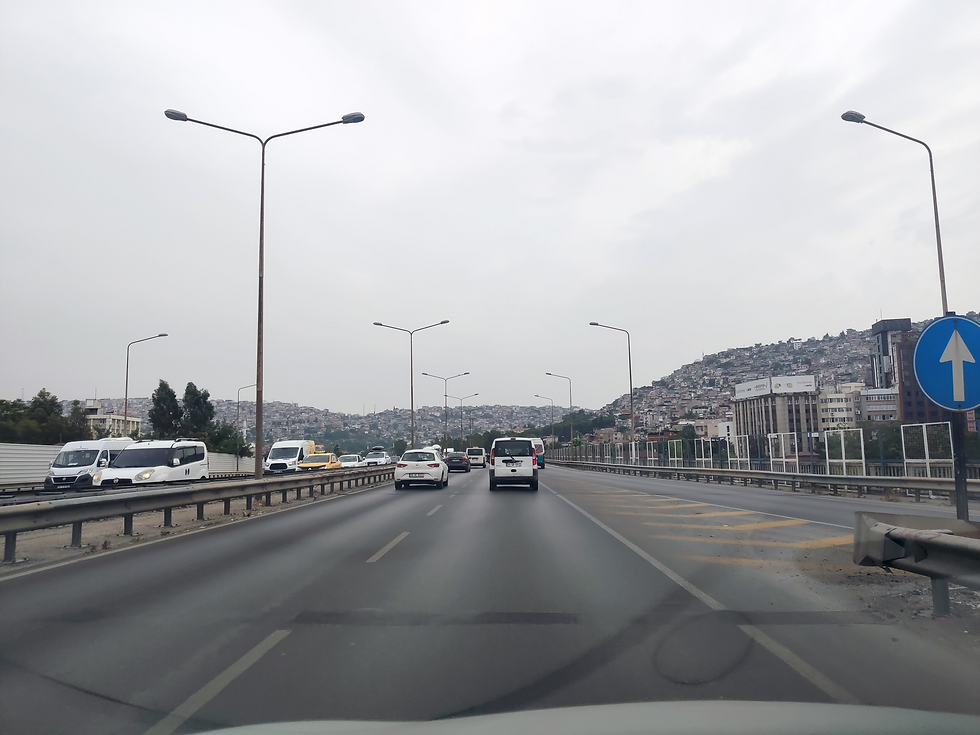
There were two Germans in our new hostel room, and I shocked them by switching languages mid-conversation after they had pegged us as Israelis, but they gave us good advice and we headed out to explore the city. We walked through Kemeraltı, Izmir’s main bazaar district, first on the main boulevard and then through winding alleyways. Izmir may be a European-oriented port city on the Aegean, but the bazaar feels unmistakably Asian. There were all the colors and smells of Istanbul’s Grand Bazaar, but without the kitsch and the tourist traps. Izmir as a whole gets relatively few Western tourists, a fact which was made obvious by the absence of English signs. I later discovered that Kemeraltı is also the Jewish district of Izmir, long populated by Spanish Jews, but none of the synagogues had signs and I didn’t do enough research in advance. A man walked up to us offering “Tommy Hilfiger, Polo, Lacoste,” and I made the mistake of asking him what the last word was. He then took this as an invitation to follow us through the whole bazaar, periodically offering us his wares yet again.
We reached the clock tower signaling the end of the bazaar (which looks rather like the one in Jaffa, also built by the Ottomans) and found a vendor selling gözleme, Turkish pancakes stuffed with everything imaginable - both sweet and savory. His menu had about 100 options, all in Turkish, so we asked him to give us his two best dishes. He chose spinach, mushrooms, and salty cheese for the first, and onion and a protein I think was tuna for the second; both were absolutely delicious.
A Surprise Jewish Connection
We walked along the waterfront towards the south end of the bay. It was well over an hour before sunset, but the sky was already turning sunset colors because of the thick layer of smoke covering the area. It was a surreal walk, surrounded by the crowded hillsides on three sides with the golden water and the premature sunset on our right. We stopped to admire the view by a ferry terminal, but were hit with the powerful stench of sewage and fish which scared us off.

We entered the neighborhood of Karataş and found Asansör, an elevator connecting two parallel streets on different levels of the steep hillside. Waiting in line to ascend, Yotam suddenly noticed a Hebrew inscription on the facade. It turned out to be a Ladino commemoration to the man who built it, a Jewish banker named Nesim Levi Bayraklıoğlu who wanted to help the elderly members of the community reach their homes from the coastline more easily. We sat at the café on the upper level of the elevator and watched the sun set a full 15 minutes earlier than it should have into the hazy horizon, a process which looked almost like a solar eclipse.
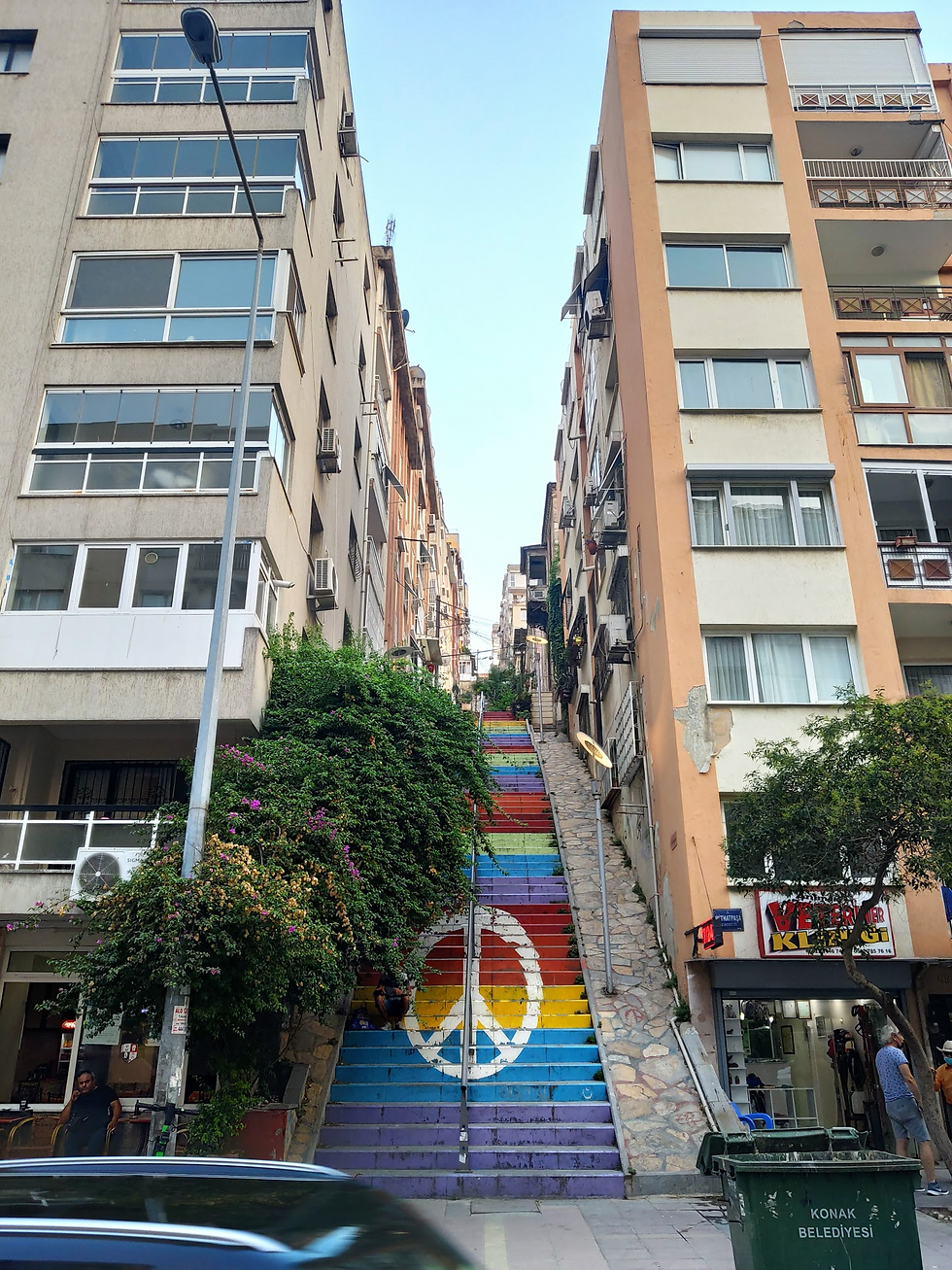
I couldn’t visit a city with a subway without riding it, and fortunately there was a subway line to our hostel in our general vicinity. It looked close on the map, but it was all the way at the top of the hill, which was so steep most of it had stairs instead of a street. We hoped to cool down in the subway station, but it was much hotter than outside, and the air was entirely still. There was also literally no way for us to pay, as the ticket machines could only top up the local transport cards, which weren’t sold there. Fortunately, there were no turnstiles, and I waited until the security guards were focused on something else to quietly get on the escalator down to the track. In contrast to the ultra-functional and barren station, the train had an extremely tacky design, with golden railings and a polished wood ceiling, but it was fast and it had air conditioning so I wasn’t complaining.

"Our country is going to shit since Erdogan made everything political”
Back at the hostel, I found myself in a deep conversation with Yusuf, a Turkish medical student who wanted to do psychiatric research in Germany. His father had served on the board of directors of TÜBİTAK, the Scientific and Technological Research Council of Turkey, until losing his job because he wasn’t loyal to the ruling AKP party, so he had plenty to say about Turkish politics. For the next hour or so, I received a fascinating lecture on Turkish politics and history which gave me both valuable context for what I had seen in the country and food for thought.
According to Yusuf, Turkey had modernized too quickly, first in the Ataturk era and later in the 1960s, without giving society enough time to absorb the changes. This meant that reforms were not implemented correctly, and society was left with a deep identity crisis - "are we European? Are we Middle Eastern? Are we a nation-state? Are we the evolution of the Ottoman Empire?" All of these questions are highly visible on the streets of Turkey today. The intense nationalism on display everywhere has been stoked by Erdogan’s AKP, but the cult of personality surrounding Ataturk is recent and more of a backlash against Erdogan, “because our country is going to shit since Erdogan made everything political.” I asked him if he was proud to be Turkish. “Pride needs to come from something well done, not just belonging. My generation is very depressed, and I will leave to Germany after studying.” It was a bleak portrait of the next generation.

Ancient Wonders and A Modern Math Paradise
After a communal breakfast the next morning, we walked through the market for coffee (for Yotam) and Baklava (for Yotam). The coffee came from an Arab stall vendor who couldn’t speak English or read the Arabic translation on Yotam’s phone, so his friend helped read it out, and after a long wait we got a decent cup of coffee. The baklava was much easier - but not quite as good as in Ankara, but for 1 TL (12¢) a piece I couldn’t complain.
We departed Izmir, this time via navigable roads, and arrived at the KEY Museum in the outskirts of the town of Torbalı. I initially thought it was a museum devoted to keys, but in reality it was named after Murat and Selim Özgörkey, two members of a family which as far as I could tell had made their fortune by bringing Coca-Cola to Turkey. The museum was actually a private car collection, and a highly impressive one at that. There were dozens of classic cars and motorcycles, some from the very early 20th century, and like good Turks - a good selection of BMWs.
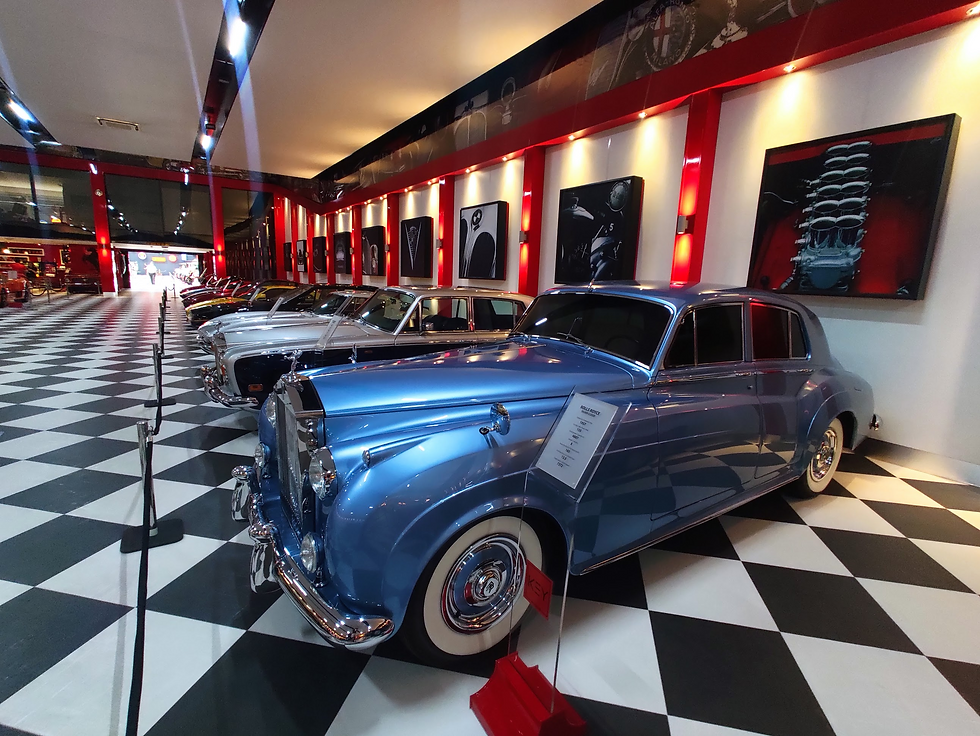
We continued south and reached the town of Selçuk, built near the ruins of the Greek and Roman city of Ephesus. At 120 TL ($14), was the most expensive admission price we had paid in Turkey, but what a treat it was, despite the deafening cicadas in the trees leading to the ruins. The temple-turned-church was fairly well preserved, as were other buildings like baths and fountains along the market avenue. The real treat, though, was the facade of the Library of Celsus, expertly restored and decorated in incredible detail, down to the inscription describing the library’s endowment 1900 years ago. There was also a highly impressive Roman theater, but much of it was closed for renovations and Aspendos had raised our standards dramatically. Much like Cappadocia, but on much larger scale, the place was like an amusement park for archaeologists, with piles of building fragments simply stacked everywhere we looked.
From Selçuk, we drove up a winding road to the village of Şirince. The village was famous for its wine and olive oil and had an aqueduct which used to feed Ephesus, but we were searching for something more esoteric. In 2007, a man named Ali Nesin who holds a PhD in math from Yale opened a math academy for Turkish youth above the village, and we wanted to see if we could visit it. We drove up a dirt path and walked the last kilometer on foot, surrounded by olive groves.
Entering the “math village”, as it was called, was like stepping through a portal to an alternative reality. The academy primarily operates during school holidays, so this was very much high season. There were teenagers lounging about in the afternoon shade, some playing chess or ping pong, all looking very relaxed. Some of the classrooms were being used, but we managed to walk through one which was essentially a small outdoor amphitheater with a roof made only of grapevines. If I were a Turkish math nerd, this small village in the Aegean hills would probably be the closest thing I could find to heaven on Earth. Someone tried asking us a question, but he couldn’t speak any English. Another student asked us if were visitors, and when we replied that we were he said that the village was not open for visitors. We politely left and walked back to our car.

Turkey's west coast - nominally some of the richest parts of the country - really drove home an impression of the country as a whole. Turkey wasn't quite a developed country, but it certainly wasn't underdeveloped, either. Instead, it very much felt like what I imagine Israel to have been like 10-20 years ago. So many things just fit this image - the people smoking indoors, the aggressive taxi drivers on their phones, the fruit stores not yet overrun by supermarket chains, the dolmuş (minibuses) connecting every little town, the security checkpoints to enter most public spaces, even the terrible roads heading straight through towns and villages while bigger highways were being built. The question was - where was it headed?















































































"Ascenseur" just means elevator in French. I like that the inscription is just in French and Ladino, tells you something about the Turkish Jews 100 years ago. Here's more info on him:
https://farhi.org/wc167/wc167_354.html
https://www.barnebys.com/auctions/lot/unattributed-early-20th-century-portrait-of-nissim-levy-b-_itfwonsve
http://cja.huji.ac.il/browser.php?mode=alone&id=277712